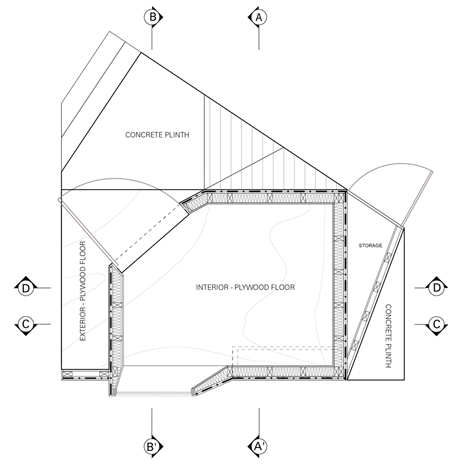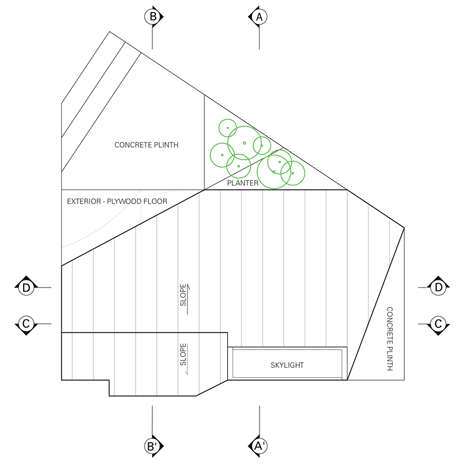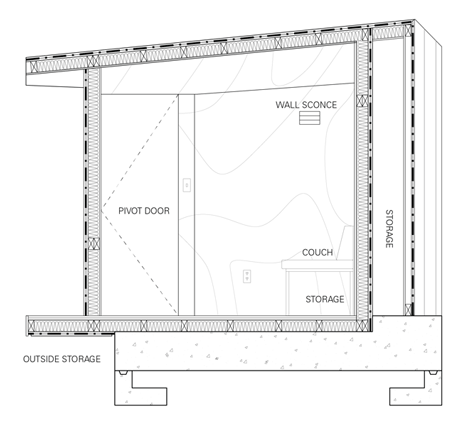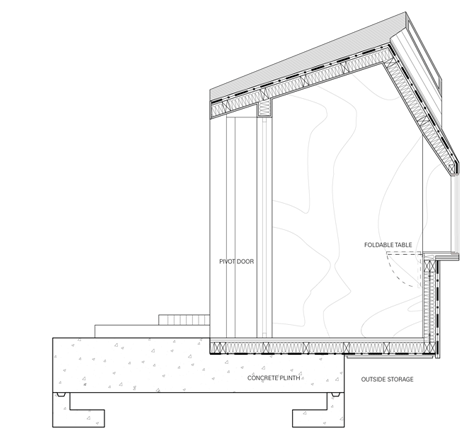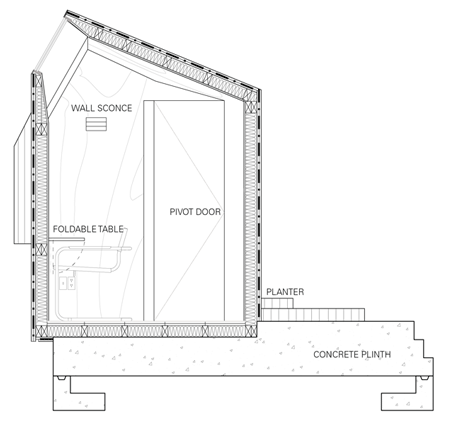Tiny writer's studio by Architensions provides a creative refuge in Brooklyn
Tucked away at the bottom of a Brooklyn garden, this tiny cedar-clad pavilion was designed as a retreat for a pair of writers.
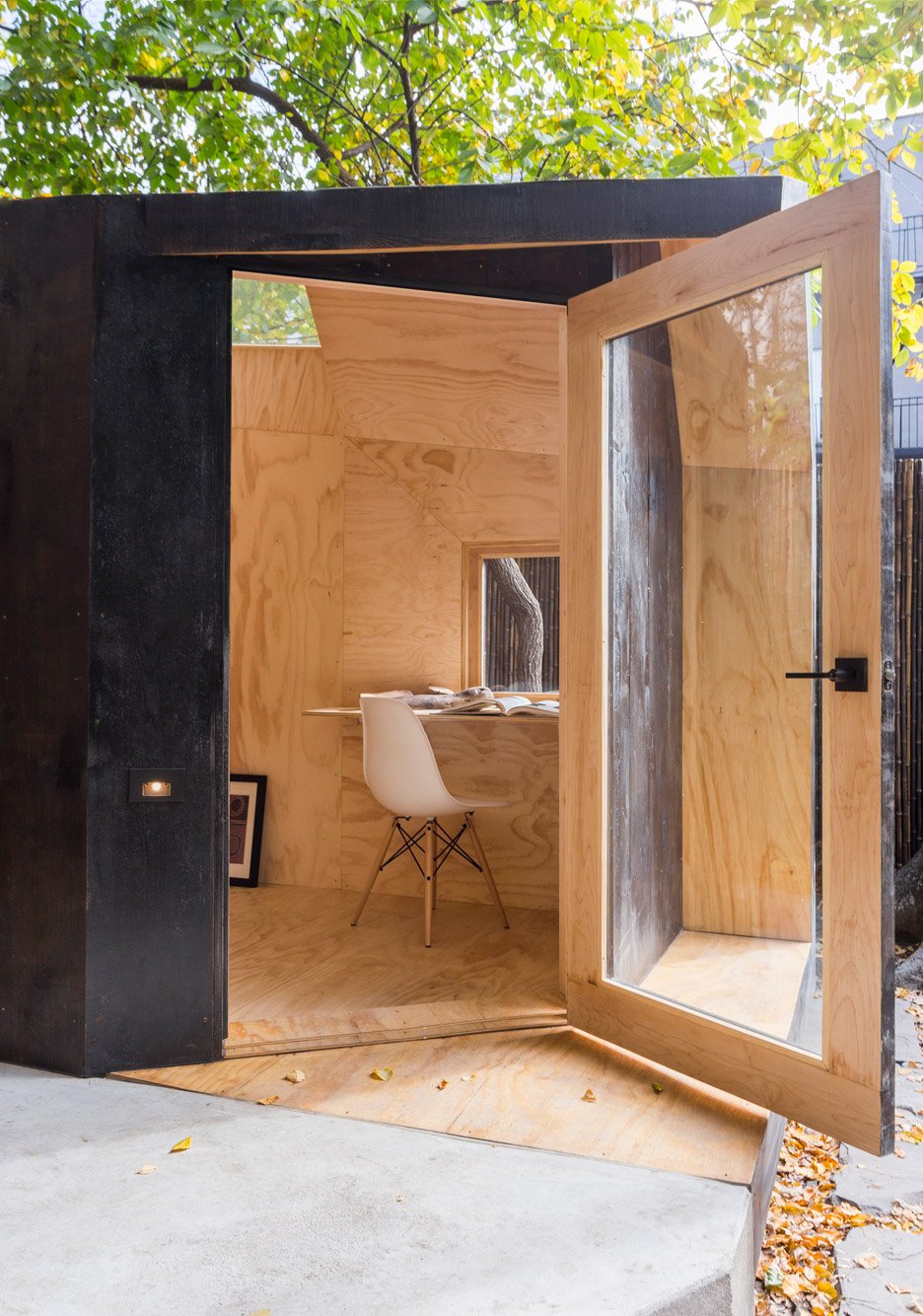
Brooklyn-based firm Architensions has created a minimal space with carefully placed views and plenty of natural light, designed to reduce potential distractions.
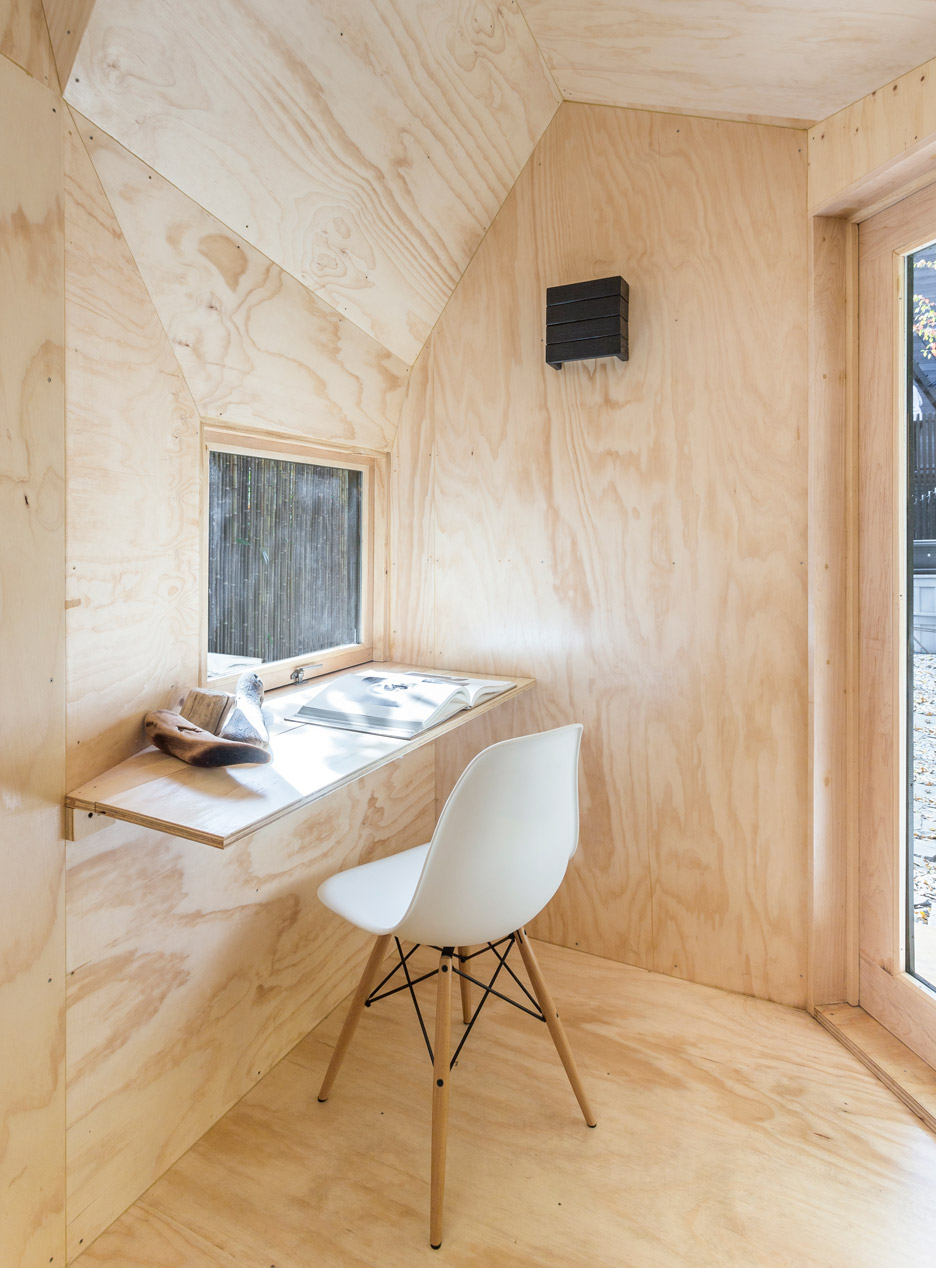
The 50-square-foot (4.6 square metres) interior of the structure is made entirely of pine plywood, furnished with a folding desk, a chair, and a built-in sofa.
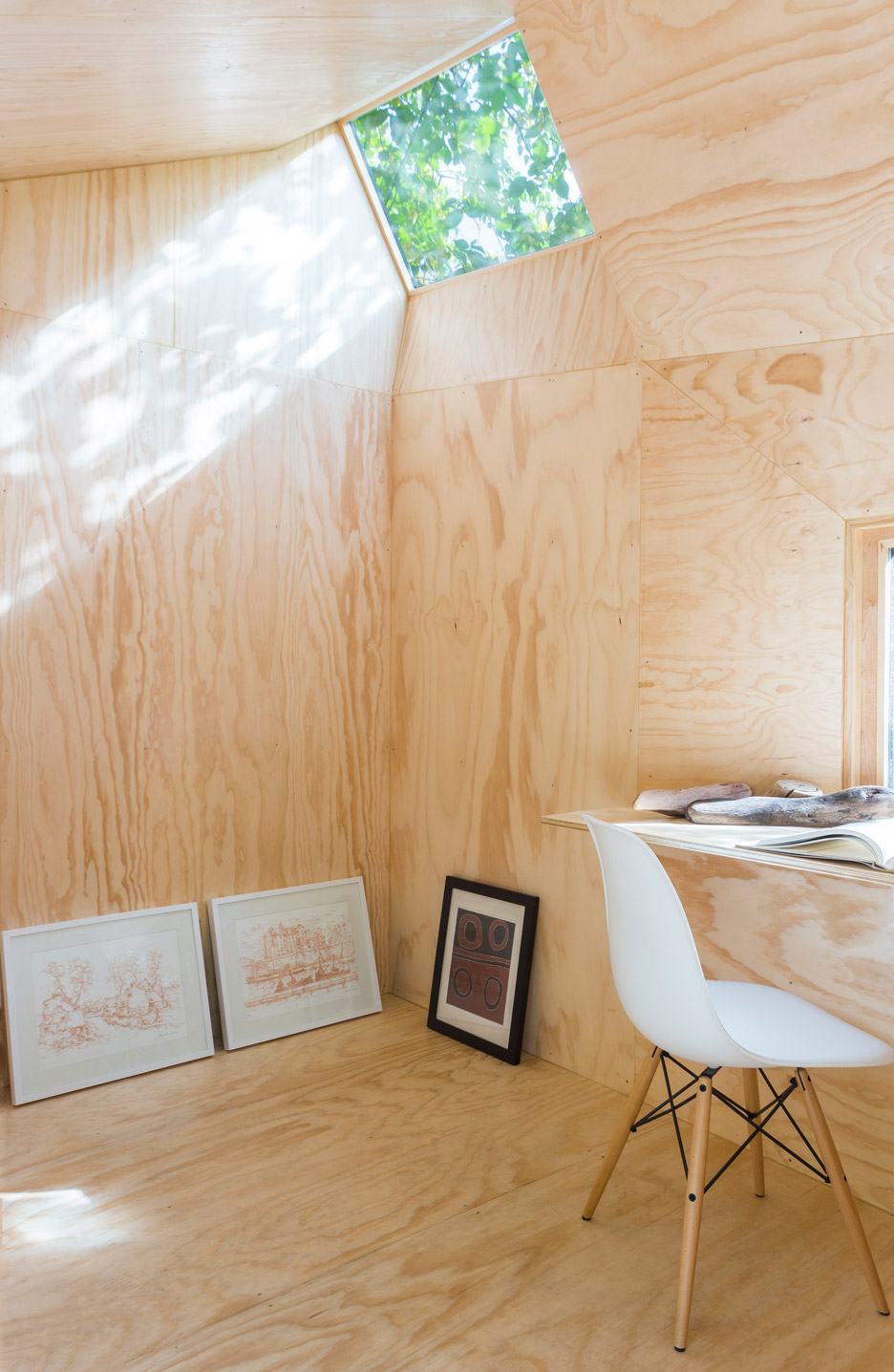
An angled skylight brings sunshine inside, and a small window at the desk level offers views out to the enclosed garden.
A full-height glass door marks the entrance to the studio, leading in from a 50-square-foot (4.6 square metres) concrete and wood terrace.
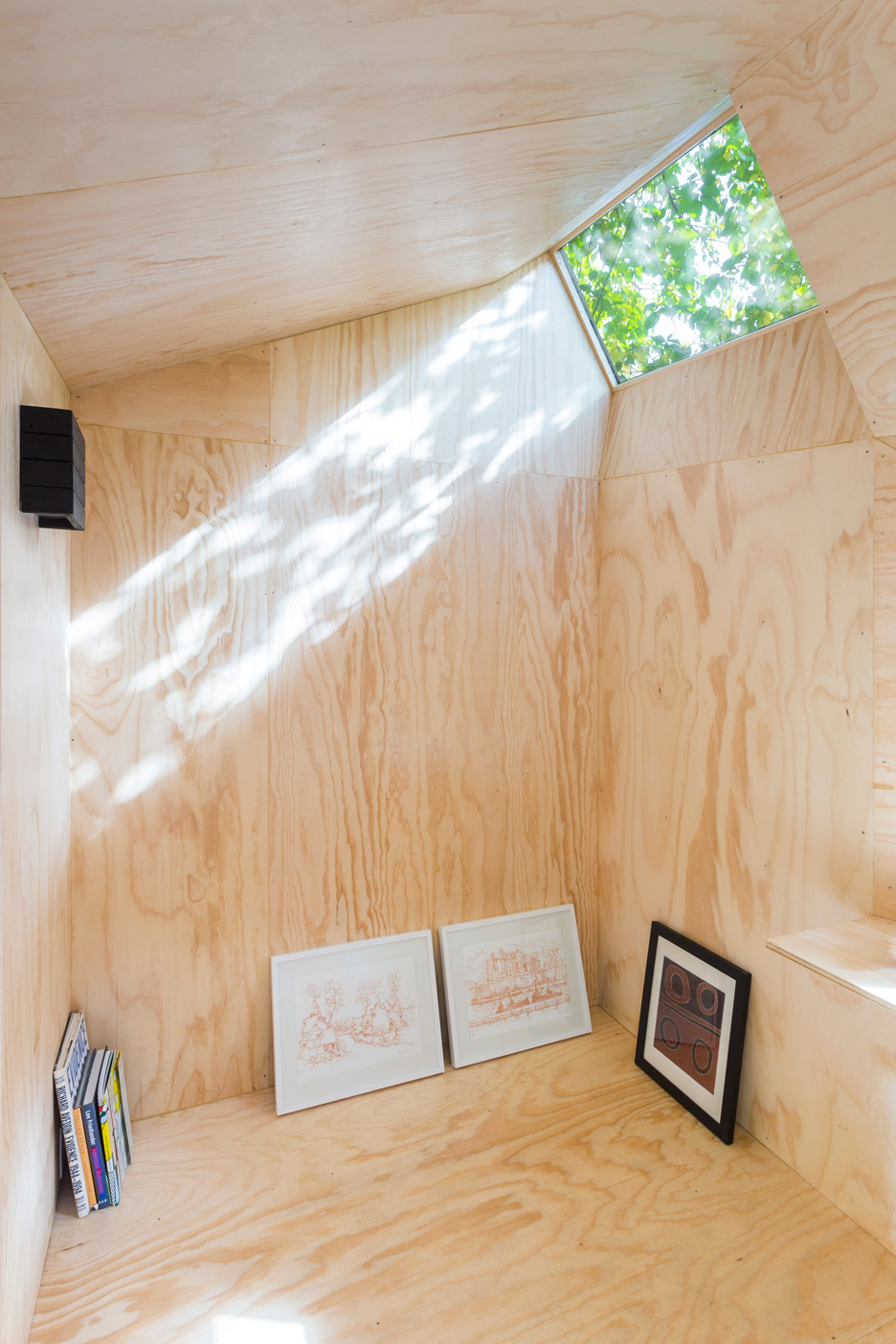
The rough, dark-painted exterior is meant to disappear at night but stand out against the garden's foliage during the day.

"The colour palette comes from a specific aesthetic the design was trying to achieve and also from the fact that the black would contrast very well the trees in every season," Architensions founder Alessandro Orsini told Dezeen. "The yellow leaves during the fall and the vibrant green in the spring/summer, and the snow in the winter."
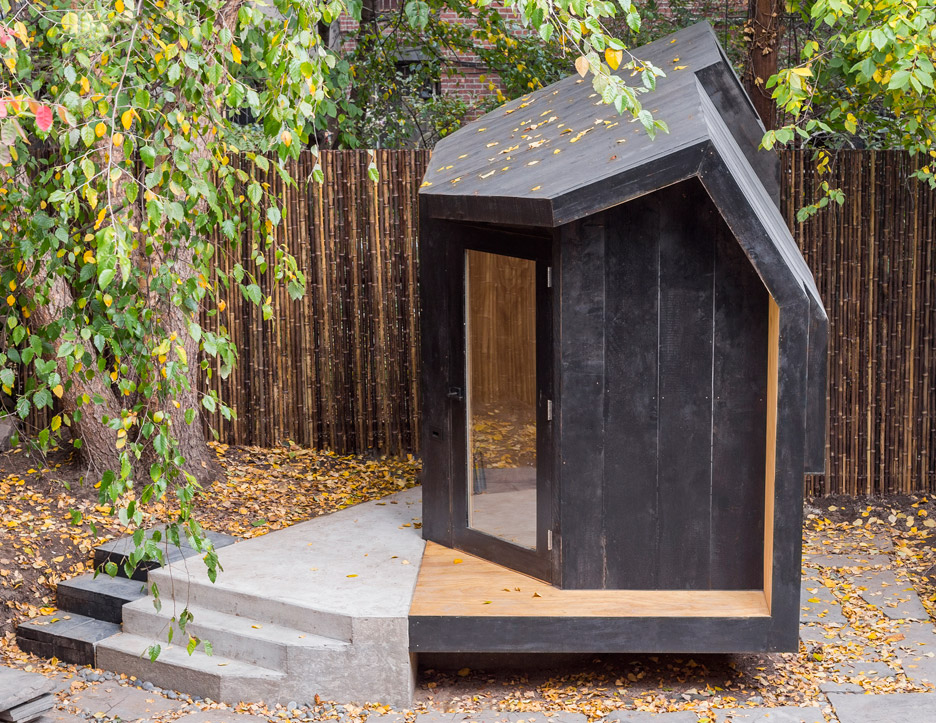
The studio has no artificial cooling but does have electricity for simple lighting.
In a hectic city like New York, quiet spaces and isolation are increasingly rare, which impacts creativity, according to the architects.
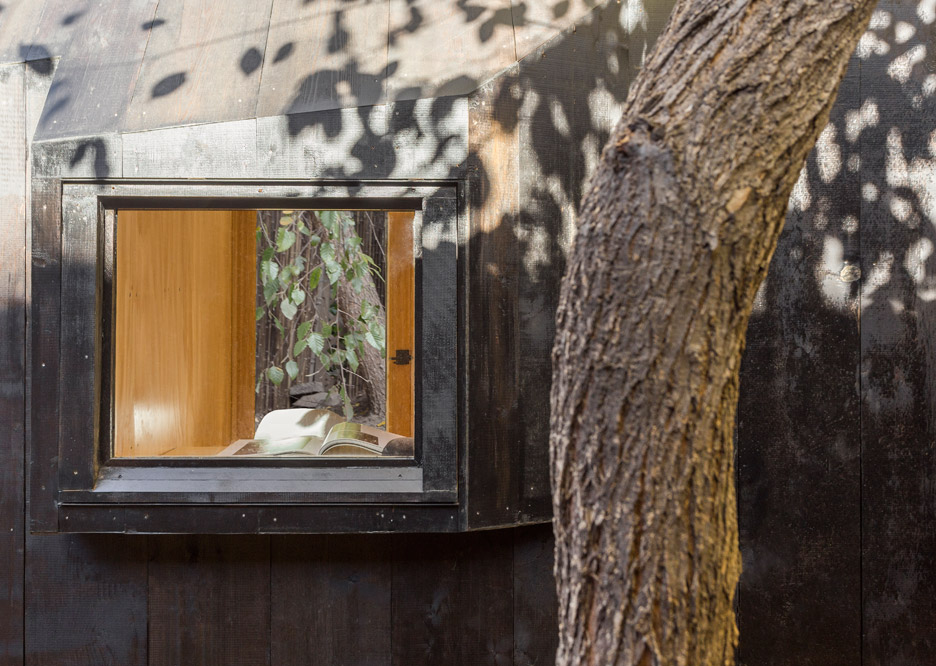
"New York City is becoming increasingly demanding in terms of the time we have in our hands and we have to find our own escapes in the city," Orsini said. "Isolation or escape is an experience that involves space and time, whether for an extended or compressed duration."
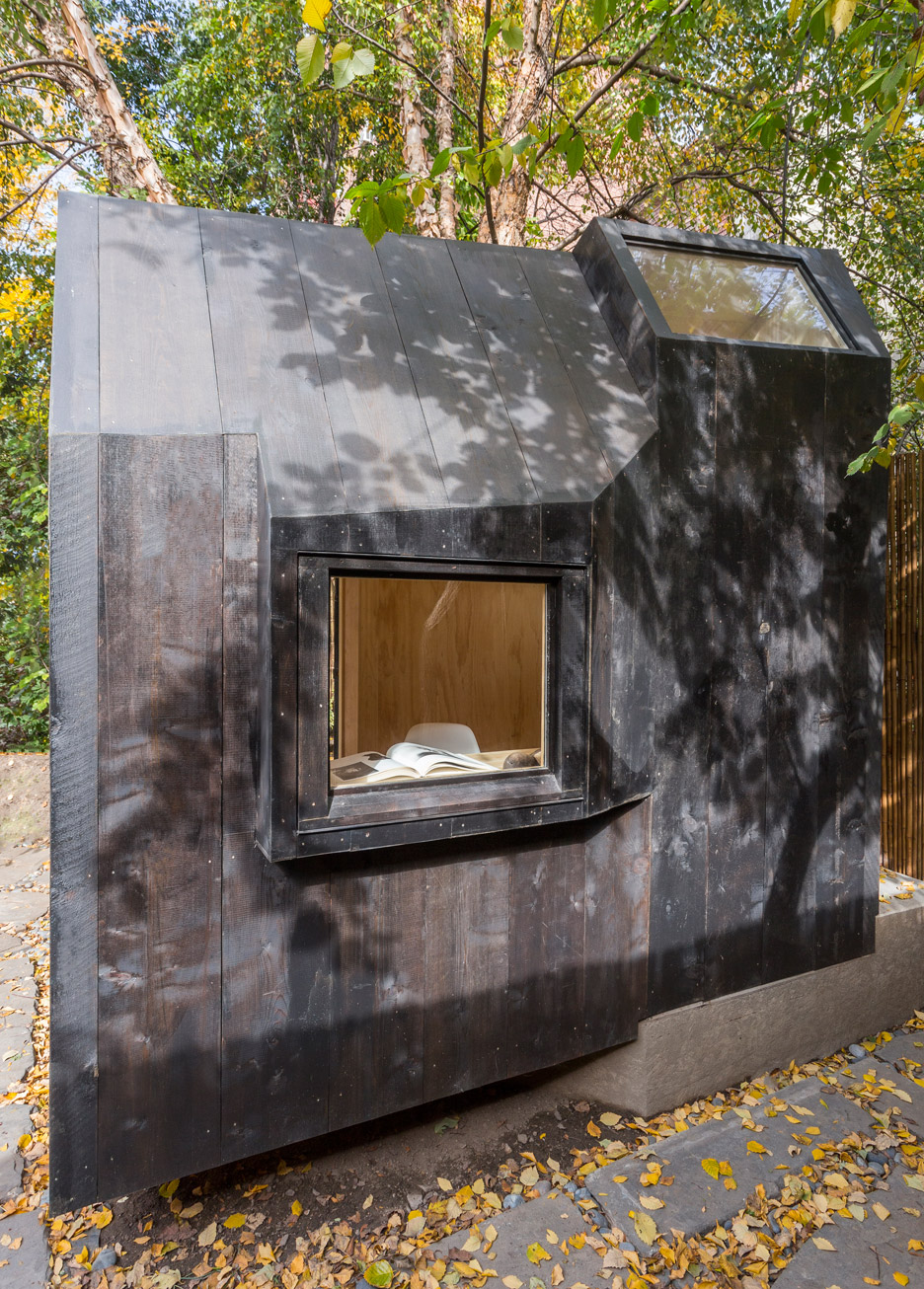
"This small-scale building is a good example of how someone can use a small space to work that is spatially separated from their domestic environment," he added.
Small structures like micro houses and garden studios are becoming increasingly popular around the world. Examples include portable tiny houses in Poland that can by moved on rail lines and a micro house on stilts in Germany.
Photography is by Cameron Blaylock.
